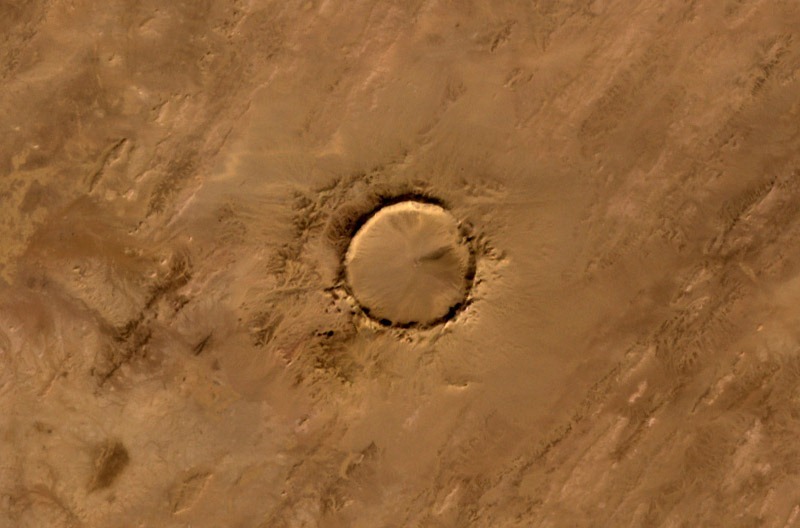For instance, stony asteroids of size 100 meter in diameter strike earth every 5,200 years on average.
Barringer Crater in Arizona, the US, is the most famous impact crater.
Here are 16 impact craters that provide the most stunning visuals.
Even craters on the moon were attributed to volcanoes.
Since Barringers discovery, numerous impact craters have been identified around the world.
It was formed 50,000 years ago.Read more about this crater and its discovery.
Photo credit:Erik Charlton/Flickr
Pingualuit Crater
The Pingualuit Crater is located in Quebec, in Canada.
It has a diameter of 3.44 km and was probably formed by an impact roughly 1.4 million years ago.
The crater rises 160 meters above the surrounding tundra and is 400 meters deep.
At the craters center, the ground rises slightly.
Here grows some surprisingly large trees that draw moisture from the craters water reserves that remain after summer rains.
The central part of Amguid crater is flat and covered with aeolian silts.
These silts refract the light due to which the crater appears white when viewed from space.
The event is thought to have occurred 345 million years ago.
Linear rock ridges alternating with light orange sand deposits cut across the crater.

These were named Yardangs and were formed by wind erosion of exposed rock layers in a unidirectional wind field.
Over time perennial streams transformed the crater into a lake.
The original crater rim was 22 km across but has been eroded away.
Its a near perfect circle of diameter 1.9 km with a rim 100 meters high.
The age of the crater is estimated to be between 10,000 and 30,000 years.
Tswaing Crater
Tswaing crater is in South Africa, 40 km to the north-west of Pretoria.
The crater is 1.13 km in diameter and 100 meters deep with an estimated age of 220,000 52,000 years.
It was formed between 4 and 5 million years ago.
The age of the crater is uncertain.
The eastern crater is 26 km across while the western crater is 36 km in diameter.
It is one of the youngest impact crater on earth, formed only 7,600 years ago.
The largest of these crater has a diameter of 110 meters and a depth of 22 meters.

One feature that makes this crater unique is the rayed structure that is visible around the crater.
These are ejecta rays formed when the meteorite exploded leaving prominent splatter pattern around the blast site.
The lake is now a popular resort area with local people for swimming, fishing and boat trips.
There are about 30 villages near crater lake Lake Bosumtwi, with a combined population of about 70,000.
Photo credit:NASA Worldwind














